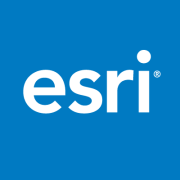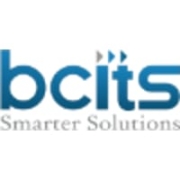Geographic Information Systems offer tools for capturing, analyzing, and visualizing spatial data, aiding complex decision-making processes.
The top 5 Geographic Information System solutions are ESRI ArcGIS, Mapbox, CartoDB, LightBox Vision and Attentive AI, as ranked by PeerSpot users in September 2025. ESRI ArcGIS received the highest rating of 9.5 among the leaders, is the most popular solution in terms of searches by peers, and holds the largest mind share of 33.4%.
Geographic Information Systems integrate spatial data layers to provide insights into trends and patterns, crucial for sectors requiring spatial analysis. They assist in resource management, urban planning, and environmental monitoring by enabling precise data analysis and predictive modeling.
What are the critical features of Geographic Information Systems?In urban planning, Geographic Information Systems help in monitoring infrastructure developments and planning effective public transit routes. In environmental sectors, they track habitat changes and forecast potential ecological impacts. Logistics industries rely on them for route optimization and efficient resource management.
Geographic Information Systems deliver dynamic spatial analytics and visualization, empowering organizations to make informed decisions to optimize their operations and enhance strategic planning capabilities.
| Product | Market Share (%) |
|---|---|
| ESRI ArcGIS | 33.4% |
| Mapbox | 25.0% |
| LightBox Vision | 15.3% |
| Other | 26.299999999999997% |














Geographic Information Systems can significantly enhance urban planning by providing data-driven insights into land use, infrastructure needs, and environmental impact. By using GIS, you can analyze spatial data to make informed decisions about zoning, transportation routes, and public amenities. GIS helps visualize urban growth patterns and forecast future development scenarios, leading to efficient resource allocation and sustainable growth strategies.
What are the benefits of integrating GIS with IoT devices?Integrating Geographic Information Systems with IoT devices allows you to collect real-time spatial data, improving decision-making and operational efficiency. This combination enables dynamic monitoring of environments, be it for traffic management, environmental monitoring, or smart city initiatives. The continuous stream of data from IoT devices provides valuable insights, enabling quick responses to changes and thereby enhancing overall system performance.
How does GIS support emergency management operations?GIS plays a crucial role in emergency management by mapping hazard zones, resource locations, and population densities to enhance response strategies. With GIS, you can analyze and visualize the impact of disasters, aiding in risk assessment and resource optimization. During emergencies, GIS helps coordinate rescue efforts by providing real-time spatial data, supporting decision-makers in deploying resources efficiently and saving lives.
What role does GIS play in environmental conservation?In environmental conservation, Geographic Information Systems help track changes in ecosystems, monitor wildlife habitats, and manage natural resources sustainably. GIS enables you to visualize deforestation, land degradation, and endangered species distributions, facilitating targeted conservation efforts. By analyzing historical and real-time data, GIS supports the development of effective strategies to mitigate environmental impacts and promote biodiversity.
How can businesses benefit from using GIS in market analysis?Geographic Information Systems can transform market analysis by offering insights into consumer behavior, competitive landscape, and optimal site selection. By leveraging GIS, you can map and analyze customer data, identify trends, and uncover new opportunities. GIS allows businesses to visualize demographic and geospatial data, enabling precise targeting of marketing efforts, efficient distribution network planning, and the identification of high-potential markets.